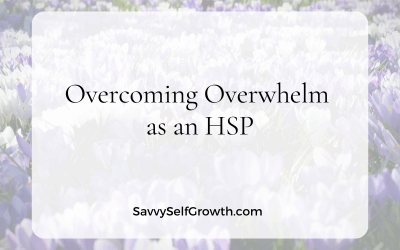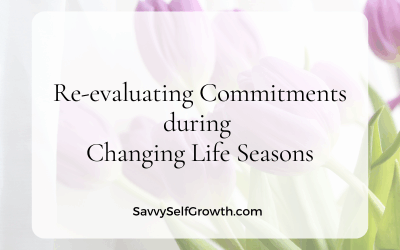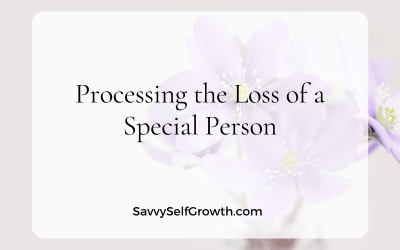In this article, I’ll talk about why it’s so important to find the root cause of our challenges (health, wealth, relationships, and everything else), instead of just dancing on the surface.
I talk about using EFT all the time because I so sincerely believe in the miraculous results we can experience. I do my best to also practice what I preach, and of course, I’m human too! Sometimes I know there’s something I ought to tap for, and I just can’t get myself to do it.
EFT can be a fantastic self-help tool, and the truth is, it’s not the easiest thing in the world to help ourselves through our own biggest challenges.
Imagine a surgeon taking out his own appendix. We might laugh at this ludicrous image, but that’s how it is with us and our own big issues.
It’s hard to be the doctor and the patient at the same time for the biggies in our life. Symptom relief with EFT is phenomenal, for instance using tapping for daily irritations and frustrations, getting ourselves out of procrastination, moving forward, and keeping the stress-load low. Bringing down resistance to an action we have to take, tapping out a day that hasn’t gone so well. And many more.
However .. the big things (Big T Traumas, especially in childhood), and figuring out the root cause for our challenges, are best not to attempt by ourselves. There are many good reasons for this and for now, just imagine all the logistics of a surgeon cutting out his own appendix. Eeuw. We’ve been designed to protect ourselves, and this doesn’t feel like a very safe thing to do, right? Same with our painful emotional wounds.
Resistance
When I hit this well-known place, I know it’s time to call in the help of a fellow practitioner, either in a swap or paid session. The ‘well-known place’ I’m talking about is that feeling of “I know I have to deal with this and find the root cause but….”
The “but” can be:
- fear to go there or face the issue
- plain old resistance (like doing a U-turn in your head and almost not even aware of it)
- finding 100 other things that are more important or urgent
- avoiding thinking about it
- suppressing the whole darn thing once again
- hoping it will get better by itself
- trying LOA (think better thoughts and like magic something better will show up)
- saying “I’ll do it later/this weekend/when I have more time” but that time never comes
- feeling resigned about it, like “It will never change, so why bother?”
- maybe you have your own version of this? What is yours?
You’re not alone. Take a deep breath. This happens to all of us, including someone who has been a practitioner for 16 years and knows all of this from personal and clients’ experiences.
Facing our big issues safely
So there we were, my colleague and I… Late Friday afternoon for me, Friday morning for her. We both had something big to deal with, and both felt the resistance to face it alone. We love and respect each other, and feel completely safe sharing life’s bigger issues in this space.
I arrived with a mind map I’d made about my issue. It’s something I’ve been using for years, and I’ve been encouraging my clients to do the same recently. When an issue has many legs, like an octopus and we don’t know where to start, it’s valuable to draw a mind map of every little thing about it. The thoughts, feelings, emotions, how it relates to other issues, the memories, the future projections….
It gets it out of our heads, we gain a bit of distance and perspective, and now we have a way to use one tiny piece (mind map branch) for some tapping.
Before we started tapping, my colleague shared a profound metaphor with me. I’d heard it in another form years ago, but this version made brilliant sense and I said instantly, “This is going to be an article soon!” (Thank you, Kristine!)
Shifting furniture around
Years ago, a colleague said: “Talk therapy is like shifting the furniture around. We understand our and others’ behaviour, know what caused it, and have amazing insights… but it’s still the same old furniture in the same old room. Nothing changes.”
I am not making talk therapy bad! Sometimes that’s where we need to start, and yet, that’s not the whole solution to truly transform an issue. Moving the same furniture around our mental room, understanding it from multiple angles does not bring full resolution, it does not heal the hurt, and we still can’t move on. Yet, absolutely, we might need that and it has value.
Re-arranging furniture on the Titanic
So when my colleague-friend uttered this metaphor, I absolutely burst out laughing, it was so brilliant. Great metaphors do that… they have us make instant connections to our own map of the world.
Sometimes what we do with all our attempts to change bits and pieces of our lives, is that we’re merely shifting around the furniture on a sinking ship. We’re wasting time with unimportant things, while the necessary, important work goes undone.
We sweep a bit in this corner, then a bit in that corner. We work a bit on various aspects ‘on the surface’ so to speak, where we see the symptoms. Change my diet, change my sleeping patterns, set a few boundaries, stop eating cake… but the fact is, the ship is still sinking until we deal with that big, gaping hole in the hull…. (the root cause).
Like that empty feeling inside, which actually needs attention. That’s the thing that causes us to overeat, under-sleep, not set boundaries and eat the second slice of cake!
To take it even a bit further, it’s easier to deny that hole ‘because this ship was supposed to be unsinkable’. It’s a shock and unpleasant to have to face it. Plus often, we just don’t know how to mend that hole.
The bottom line
If we don’t fully process the painful events, those Big T’s and Small T’s of our lives that happened in the past, and shaped the vast majority of our behaviour (up to 97%, according to some sources), we’ll keep recreating what we don’t want. Because we haven’t dealt with the hole that keeps letting in water. It’s the hole that needs attention. The root cause of the sinking ship.
Back to our session
So we started tapping… and each of us, during our own half of being the client, got to see places where we have not dealt with the hole in our own ship. We’d been re-arranging some furniture, but the ship is still taking on water. Putting out new pretty furniture is not going to heal anything.
We almost grinned our way through the session, as we recognized this metaphor in our own lives, too. Just two normal human beings, helping each other to face the hard stuff.
Dealing with the hole means:
We face the places in our lives where we were hurt, we get ready to deal with that difficult childhood, we dig into the hard things we’d rather forget… and we process them fully so that Amy Amygdala doesn’t set off the fire alarm and start the fight/flight/freeze response.
It also means — doing all the above with support, with kindness, with patience, in the gentlest way possible. We absolutely do not have to swim in the pain and re-experience it all over again to heal it.
Quite the opposite. There are ways these days to heal all the images, memories, sounds, thoughts, and conclusions we reached in our past.
And that’s what I mean by ‘fully process’ those past events. There are ways, like EFT, TAT, and many others, that can help us reset and calm the nervous system so that we can feel safe and don’t get so triggered. So that we are repairing that hole in the hull, and not just dusting off the chandelier while the ship is tilting at a dangerous angle.
A perfect example: Damaged, the book
I read a book over the weekend called “Damaged”. It is a tragic account of a man caught up and damaged in the care system in the UK. He wrote about his own, and many other tragic stories too. Chris Wild spent a huge portion of his life running away from his past — medicating the hurt and pain with drugs, alcohol, sex and fighting.
My heart was hurting when I imagined the huge internal pain he was in for many years. The care system simply did not offer any true help. Many kids were abused in the care homes by their supposed caretakers. And fortunately, some of those abusers have since been convicted and jailed.
We don’t have to have experienced that level of abuse and pain to walk around with unhealed wounds and scars that impact our daily lives.
For some of us, simply feeling terribly isolated and alone in our childhood would have been enough to cause the Titanic to tilt. For others, it might have been an extremely critical parent (or both) who, though well-meaning, had a devastating impact on self-esteem and self-worth, and therefore how we show up in life. Perhaps we grew up with a lot of uncertainty and moving a lot — which influenced how much we try to control things now to feel safer. And for highly sensitive people, we may have felt expectations from a parent who themselves had many unprocessed traumas in their own lives — so we started caring and taking responsibility for the parent.
There’s a multitude of examples of “The Titanic” and they’re not all as dramatic or tragic as Chris Wild’s story — but they’re real, and they cause us to limp along, instead of thriving.
A few tips for healing the hole in the ship
One: Not alone
Don’t do it alone. Who wants to take out their own appendix? We shouldn’t even have to have that thought.
Human beings are made for connection and healing WITH others. The structure of our nervous system is set up that way — look to others for help first. Unfortunately, we were taught we ‘should be brave’ or ‘soldier on’ or ‘boys don’t cry’. We were made to feel ashamed about our problems so we hide. Or we simply can’t trust others, because of childhood experiences. Still — healing will not happen when we struggle with this stuff in our minds. If that worked, everyone would be walking around happy as Larry.
Two: Free conversations
Reach out to a possible practitioner and ask for a conversation. Most practitioners these days offer a free call of some sort, so you can meet them and experience their energy and the way you’ll be treated. The free conversation is not meant to start doing the work yet. Not only is this for your sake — it’s also a way for the practitioner to gauge whether they’re the right person to support you, with the experience and skillset they have. In my free conversations, I ask many questions so I can start understanding more about your ecosystem. You’re a whole being, not just your problem… and often the things we tend to discount or have buried, have a huge bearing on the problem we want to sort out.
Three: Patience
Be patient with yourself and the healing journey. The ship Titanic sunk while the band was still playing, but you don’t have to! It takes time to work through aspects that have brought your personal ship to a place where it feels like the hull needs repair. The hole was often made by many smaller and bigger things over years — not one big rip, like for the Titanic.
Four: Safety first
We need to feel super safe to heal and look at the difficult places. If the first person you had a conversation with didn’t make you feel ultra-safe, have a conversation with other practitioners. Safety and trust are key for this deep work. Now, of course, trust builds even more over time. But if you don’t have the feeling of safety and complete non-judgment after a first meeting, look elsewhere. I’ve been to a naturopath who criticised me for eating certain things and not using eco-friendly products… and I can tell you I didn’t feel like going back! A practitioner should never make you feel judged or criticized.
Five: How long will it take, and can I expect a miracle, please?
I’ve seen beautiful miracles happen in a single session. A traumatic event can be completely healed in one single session. I’ve seen and experienced it. However — often the hole in the ship has been made over many years, slowly eroded. An innocent little baby is born, and over many years, life experiences can squash so much of that innocence and light. Rome was not built in a day, and neither was your current self, with the way you see yourself now.
So yes — expect the miracle of transformation yet let go of expecting it all in one session. I worked with once-off sessions for a few years, until I realised it creates the unfair expectation that a whole big issue could be transformed in that session. Issues are made up of many different puzzle pieces.
So how long will it take?
Some clients’ miracles take 18 months, others take 12 months, and others 3 months. For some, years. You’re unique, your experiences and background are unique, so your miracle is unlike anyone else’s too. Expecting instant results adds a whole lot of pressure that we can all do without. Healing happens when we feel safe, remember?
I work with new clients for at least 3 months to gain beautiful traction and momentum. Then we take stock of how far you’ve come, and we can change the agreement if necessary. Other practitioners might have different ways of working.
In my practice, I see the best results this way, and my clients love the steady rhythm of a certain number of sessions every month. If you’re interested in private work with me, please do reach out, or go right ahead and request a free conversation here.




